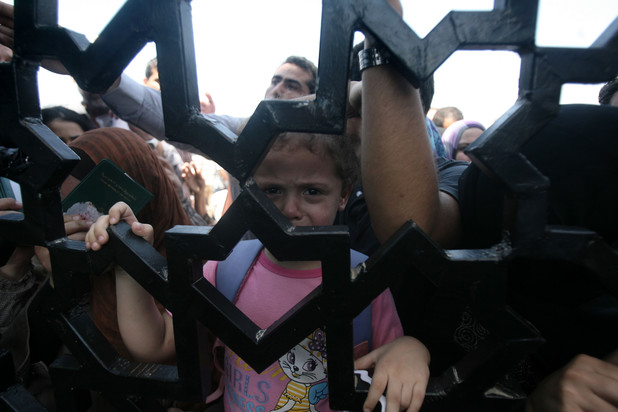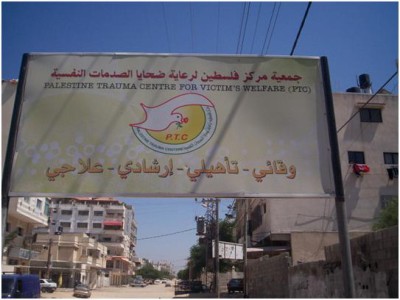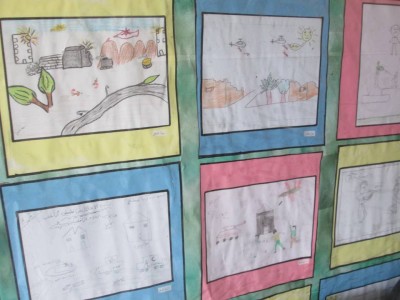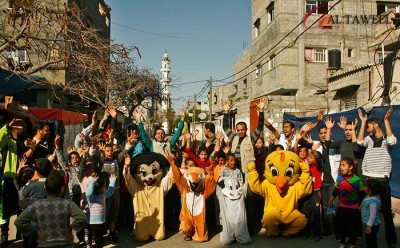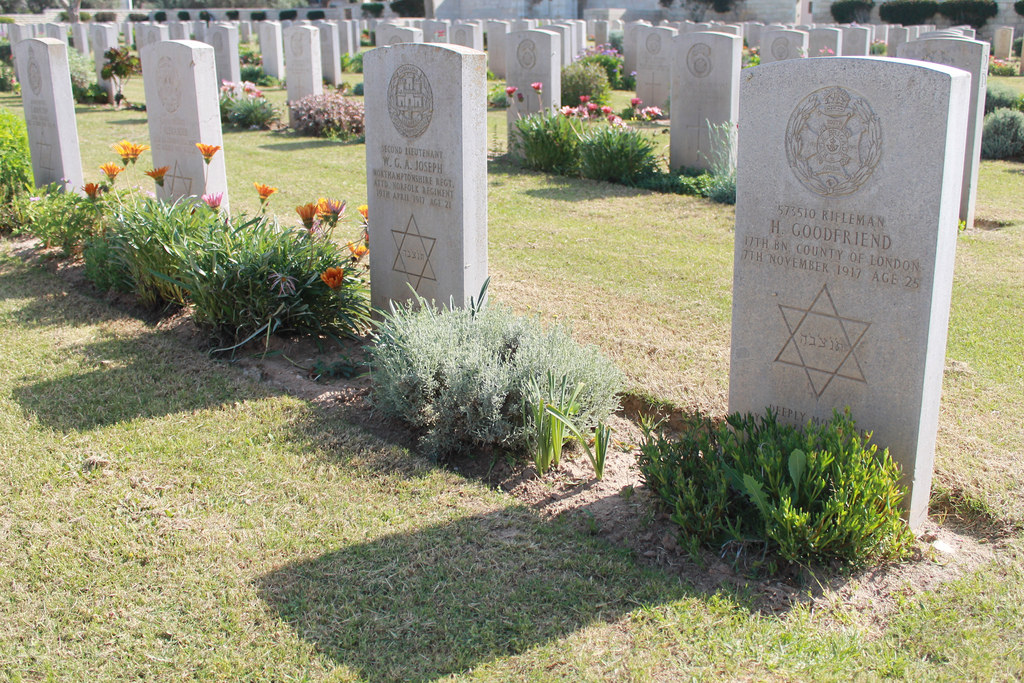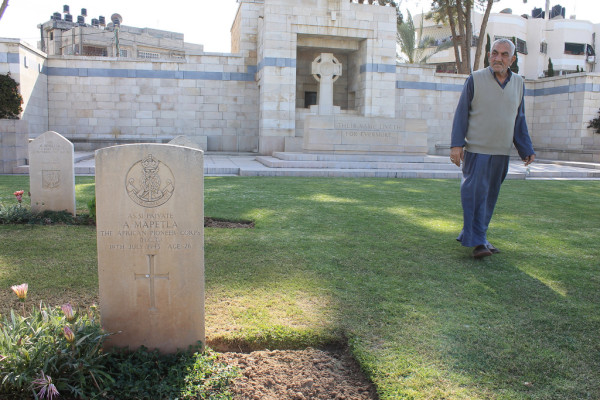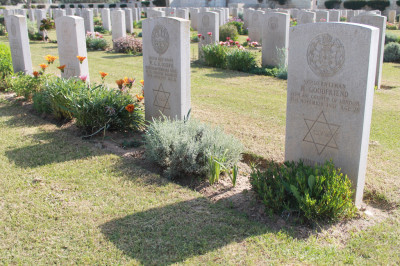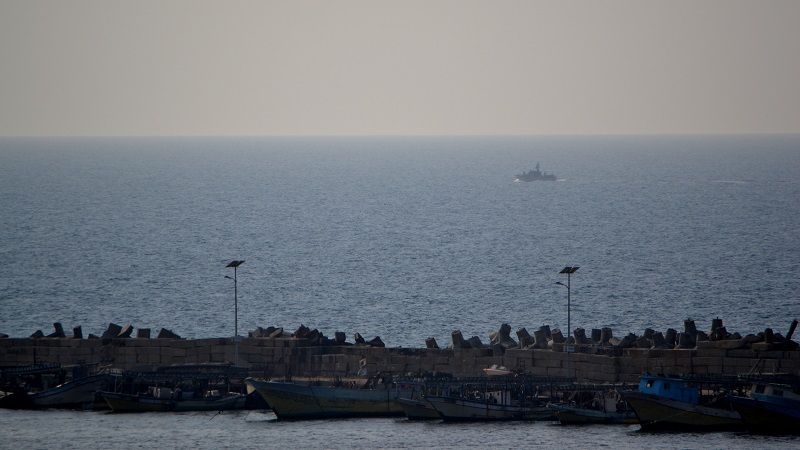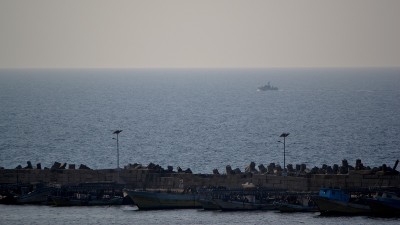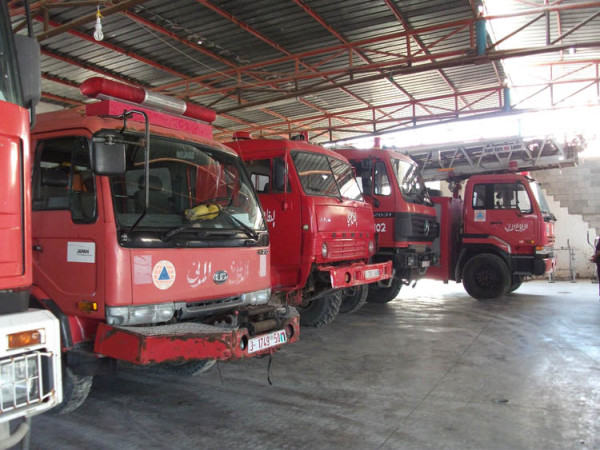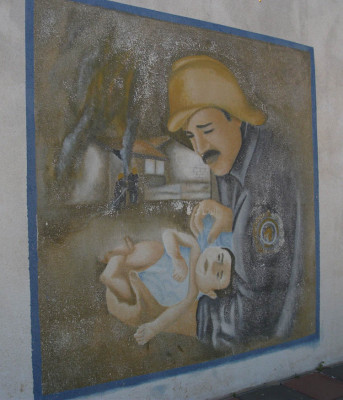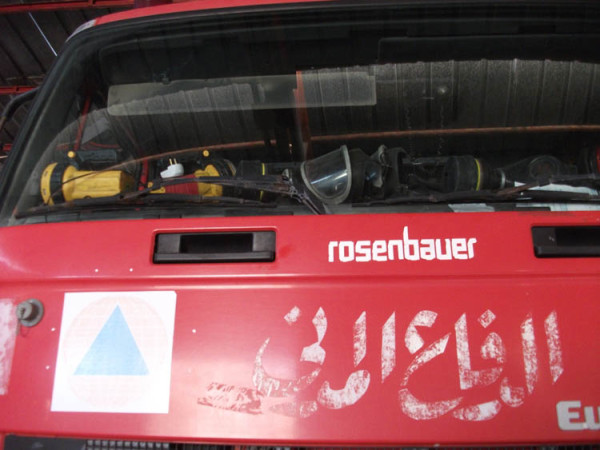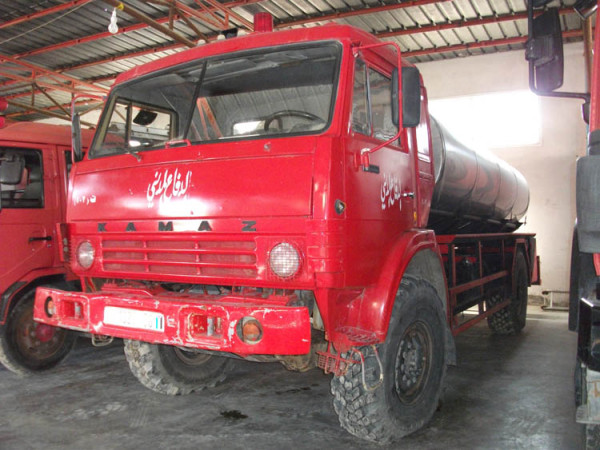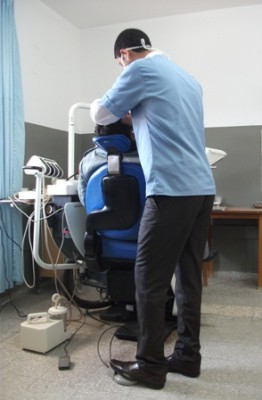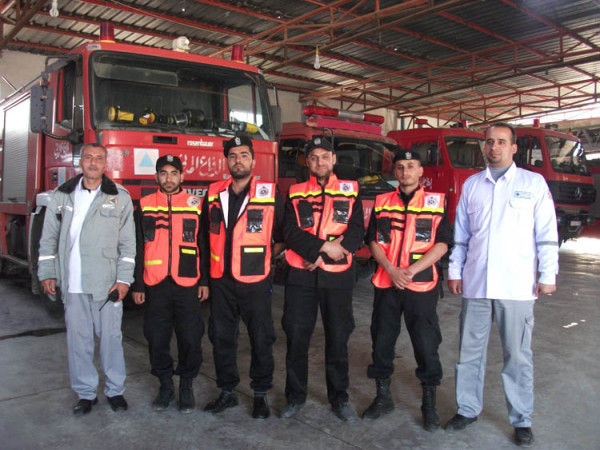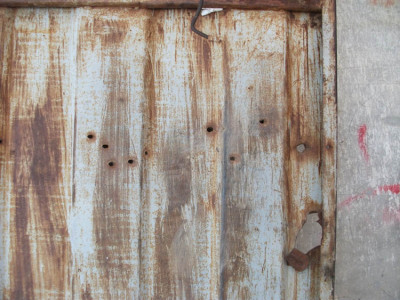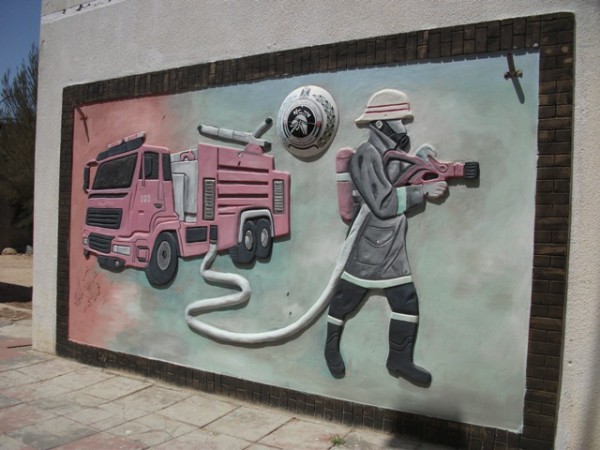2nd August 2014 | International Solidarity Movement | Occupied Palestine
Urgent call to action
In response to calls from our fellow human beings and comrades in Gaza who ask that we bring an end to the Egyptian government’s complicity in Israel’s genocide of the people of Gaza:
To all of you who understand the interconnectedness of our many human struggles for justice and dignity, we implore you to act in solidarity with Palestine as Gaza burns and bleeds, gathers and buries the lifeless bodies of her children, and contends with carnage, despair, and loss for which there is no language.
More than 1.8 million human beings have been under a suffocating, deadly siege imposed by Israel and accommodated by the Egyptian government, that severely restricts all movement of people and products.
It is creating in Gaza what has been described as the biggest open air prison in the world, subject to frequent Israeli attacks and used as a laboratory to test and market new Israeli weapons.
The average age in Gaza is 17 years, with half the people under the age of 16. This is a defenceless civilian population, densely packed into this besieged enclave with no place to run or take refuge from Israel’s full-on military onslaught.
The cynical claims that Palestinians are forcing Israel to kill their children lack the basic requirements of logic and minimal vestiges of humanity. No one is forcing Israel to commit genocide or to target infrastructure like hospitals, schools, and the only power plant in Gaza.
Purposefully, of their own volition, Israelis are using the most sophisticated death machines against civilians: children, families, medical facilities and aid workers. Meanwhile Israel maintains a violent and brutal aerial, land and sea siege on Gaza, continuous since 2006.
Despite a call from Egyptian citizens to lift the siege, the Egyptian government which controls one border and has the option to be part of a humanitarian response to the besieged people of Gaza, has instead supported the Israeli plan for return to the status quo of slow genocide.
Many people in Gaza are desperate to avoid slow death by savage siege, hunger and lack of medical care and demand to live like normal human beings, but feel the only option Israel gives them is to die quickly by carpet bombings and wanton mass destruction which Israel now mercilessly executes.
Egyptian foreign minister Sameh Shoukry stated that the Rafah Crossing into Egypt is “open.” “We receive injured daily from Gaza, as we pass more than 600 tons of aid through.”
However, between the 10th and 27th of July, the Egyptian government has allowed an average of just nine wounded people a day to cross the border from Gaza to Egypt to receive medical treatment.
Several aid shipments of medical supplies, and even doctors, were denied entry. In light of the actual number of wounded in Gaza, at least 8,265 as of 31 July 2014, the Egyptian government’s allowance is condemnable.
Egypt must help their sisters and brothers in Gaza. The Egyptian government must refuse complicity in Israel’s genocide of a population they hold captive.
Here’s how you can help:
-
Go to your local Egyptian Embassy or consulate and demand the Egyptian government open Rafah crossing immediately and end its complicity with Israel’s genocide of the people of Gaza.
-
Flood embassy phone-lines/email with messages of protest. Write letters to print media holding Egypt complicit and similarly deluge radio/TV and Facebook etc.
-
Raise your concerns with your political representatives.
Please communicate your actions and the Embassy responses to us via email at: openrafahnow@gmail.com.
Updated list of endorsers:
- Ahmed Kathrada, Former Robben Island inmate, anti-Apartheid icon, ANC leader – South Africa
- Mr. Ronnie Kasrils Former ANC Minister for Intelligence Services – South Africa
- Luisa Morgantini Former Vice President of the European Parliament – Italy
- Richard Falk Former United Nations Special Rapporteur on human rights in the Palestinian territories occupied since 1967
- Breyten Breytenbach, anti-Apartheid writer, painter, novelist and icon – South Africa
- Noam Chomsky, linguist, philosopher, political commentator and activist – USA
- Congress of South African Trade Unions (COSATU) – South Africa
- Mosireen – Egypt
- Abu Dis Popular Committee – Palestine
- Adalah- NY (the New York Campaign for the Boycott of Israel) – USA
- Al Eizariya Popular Committee – Palestine
- Alternative Information Center – Palestine
- Alternative Tourism Group – Palestine
- Al Walaja Popular Committee – Palestine
- Al Mufakara Popular Committee – Palestine
- Al Masara Popular Committee – Palestine
- Assopacepalestina – Italy
- At Tuwani Popular Committee – Palestine
- Australians for Palestine – Australia
- Autónomos de Palestina – Spain
- Badil – Palestine
- BDS Catalunya – Catalunya
- BDS Italy – Italy
- BDS Kampagne – Germany
- BDS Los Angeles for Justice in Palestine – USA
- BDS Madrid – Spain
- BDS – Netherlands
- BDS – South Africa
- Bil’in Popular Committee – Palestine
- Boycott Israeli Apartheid Campaign- Vancouver – Canada
- Boycott Israel Network – UK
- British Muslim Initiative – UK
- Campagne BDS France – France
- Campaign for Nuclear Disarmament – UK
- Canadian Boat to Gaza – Canada
- CODEPINK – USA
- Collectif Palestine Libre (Toulouse) – France
- Complicitats que Maten – Catalunya
- Diensten Onderzoek Centrum Palestina – Netherlands
- European Jews for a Just Peace – Europe
- Felagid Island – Palestina – Iceland
- Fourteen Friends of Palestine, Marin – USA
- Free Gaza – International
- Freedom Flotilla Italia – Italy
- Gaza’s Ark – International
- Global Peace and Justice Auckland (GPJA) – New Zealand
- Hawai’i Coalition for Justice in Palestine – USA
- Holy Land Trust – Palestine
- International Jewish Anti-Zionist Network – International
- International League for Human Rights – Germany
- Ireland Palestine Solidarity Campaign – Ireland
- Irish Anti-War Movement – Ireland
- IHH Humanitarian Relief Foundation – Turkey
- International Solidarity Movement Northern California – USA
- International Solidarity Movement Estado Espano – Spain
- International Solidarity Movement – Palestine
- Italian Peace Research Institute (Civil Peace Corps) – Italy
- Izquierda Anticapitalista – Spain
- Jews Against Genocide – International
- Jews for Palestinian Right of Return – USA
- Jüdische Stimme für gerechten Frieden in Nahost – Germany
- Just Foreign Policy – US
- Kenya Palestine Solidarity Committee – Kenya
- Kufr Qaddum Popular Committee – Palestine
- Labor for Palestine NY – USA
- Lluita Internacionalista – Catalunya
- Ni’lin Popular Committee – Palestine
- Nabi Saleh Popular Committee – Palestine
- Occupied Palestine and Syrian Golan Heights Advocacy Initiative
- One Democratic State Group – England
- Palestine Festival of Literature – Palestine
- Palestine Forum in Britain – UK
- Palestine Solidarity Alliance – South Africa
- Palestine Solidarity Campaign – Scotland
- Palestine Solidarity Campaign – South Africa
- Palestinian-American Women’s Association of Southern California – USA
- Palestinian Center for Rapprochement Between People – Palestine
- Palestinian Grassroots Anti-Apartheid Wall Campaign (Stop the Wall) – Palestine
- Palestinian Union of Social Workers and Psychologists – Palestine
- People for Peace, London – Canada
- People for Peace London – Canada
- The Ahmed Katharda foundation – South Africa
- PFB – Friends of Al Aqsa – UK
- Plataforma de Boicot Acádemico contra Israel – Spain
- Plataforma de Solidaridad con Palestina Madrid – Spain
- Popular Struggle Coordination Committee – Palestine
- Red Sparks Union- Vancouver – Canada
- Red de Solidaridad contra la Ocupación de Palestina – Spain
- Roman Solidarity Network for Palestine – Italy
- Rumbo a Gaza – Spain
- Samidoun Palestinian Prisoner Solidarity Network – Canada
- Scottish Palestine Solidarity Campaign – Scotland
- Ship to Gaza – Norway
- Ship to Gaza – Sweden
- Social Democratic Party – Kenya
- Stop the War – UK
- Students for Justice in Palestine at Brooklyn College – USA
- Students for Justice in Palestine Auckland – New Zealand
- Student Senate of Bethlehem University – Palestine
- Susya Popular Committee – Palestine
- Unite Union – Palestine
- Youth Against Settlements – Palestine

